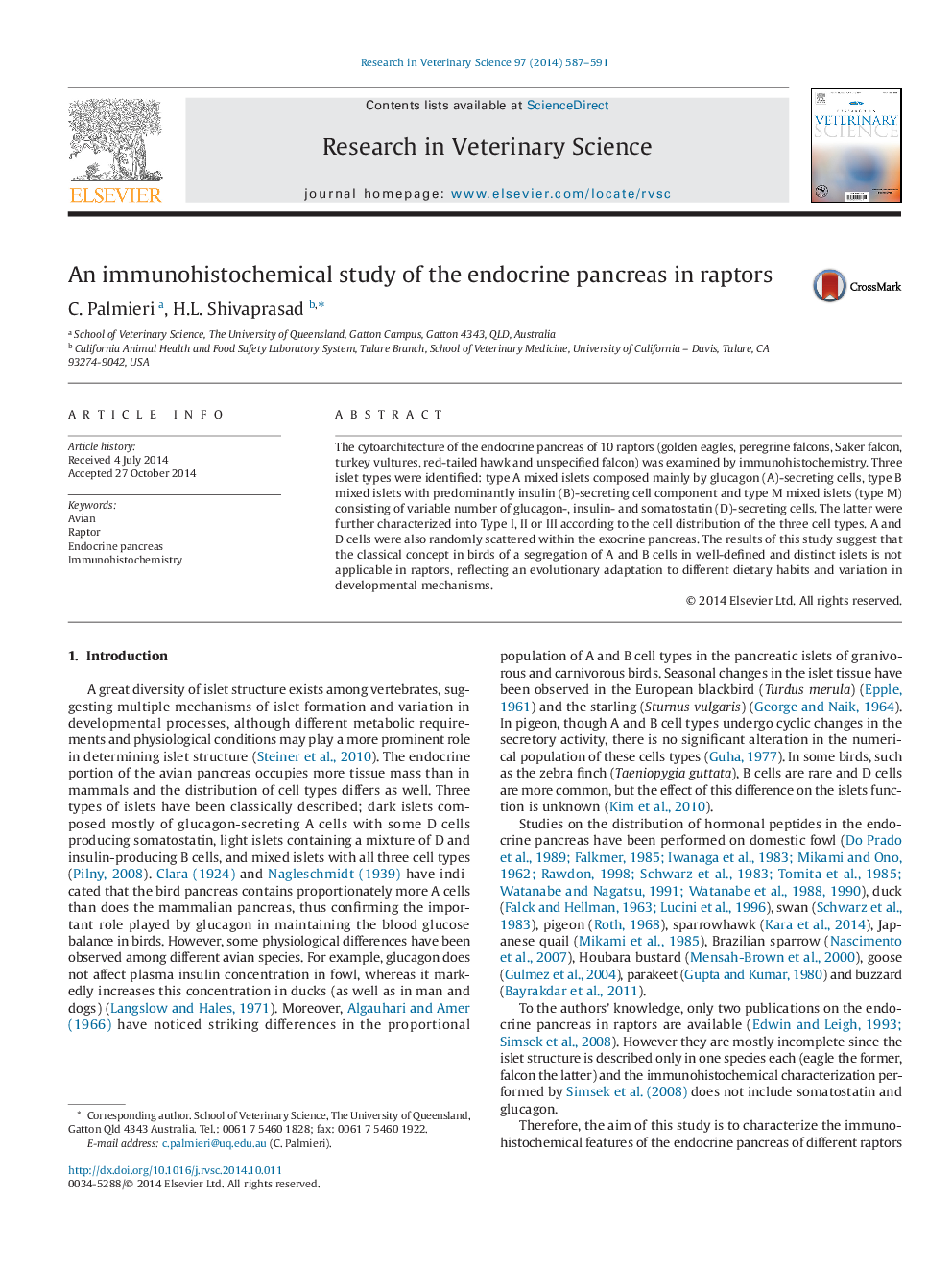| Article ID | Journal | Published Year | Pages | File Type |
|---|---|---|---|---|
| 5794840 | Research in Veterinary Science | 2014 | 5 Pages |
â¢The endocrine pancreas of raptors consist of type A, B and M mixed islets.â¢The cytoarchitecture is different from other avian or mammalian species.â¢Endocrine pancreas structure reflects the adaptations to specific dietary habits.
The cytoarchitecture of the endocrine pancreas of 10 raptors (golden eagles, peregrine falcons, Saker falcon, turkey vultures, red-tailed hawk and unspecified falcon) was examined by immunohistochemistry. Three islet types were identified: type A mixed islets composed mainly by glucagon (A)-secreting cells, type B mixed islets with predominantly insulin (B)-secreting cell component and type M mixed islets (type M) consisting of variable number of glucagon-, insulin- and somatostatin (D)-secreting cells. The latter were further characterized into Type I, II or III according to the cell distribution of the three cell types. A and D cells were also randomly scattered within the exocrine pancreas. The results of this study suggest that the classical concept in birds of a segregation of A and B cells in well-defined and distinct islets is not applicable in raptors, reflecting an evolutionary adaptation to different dietary habits and variation in developmental mechanisms.
